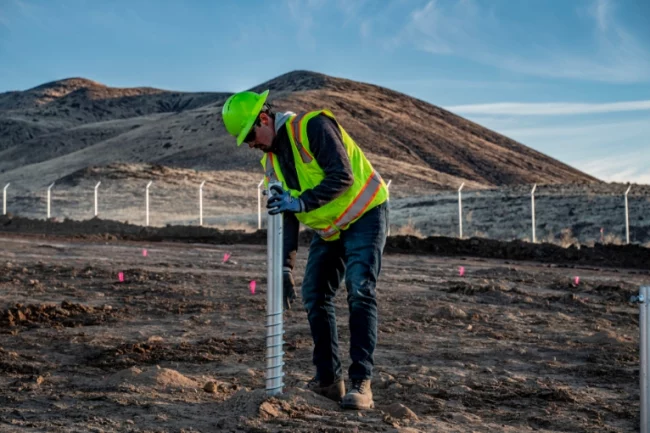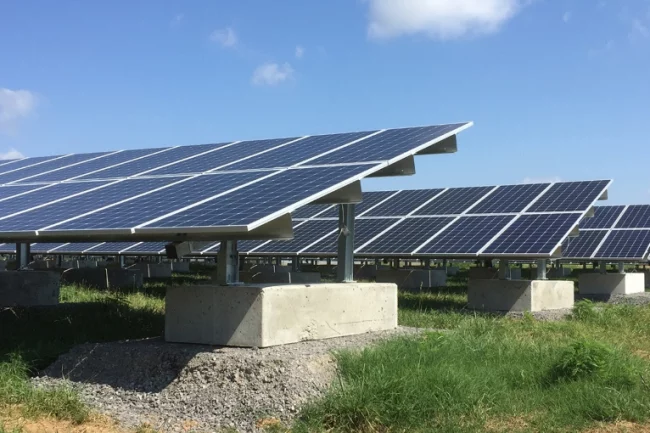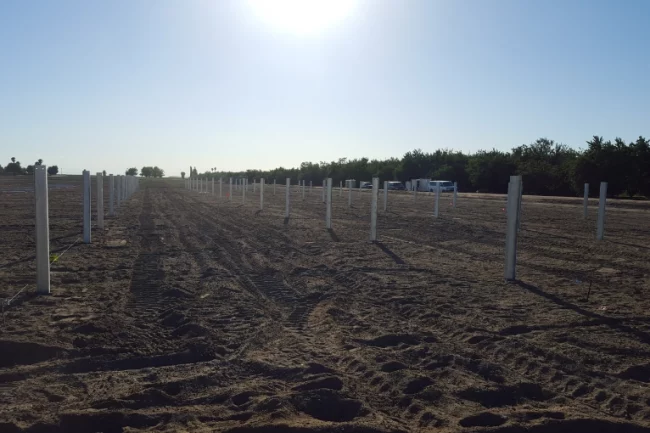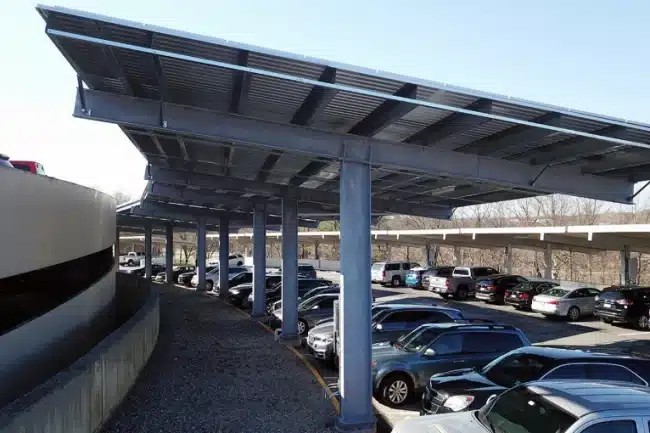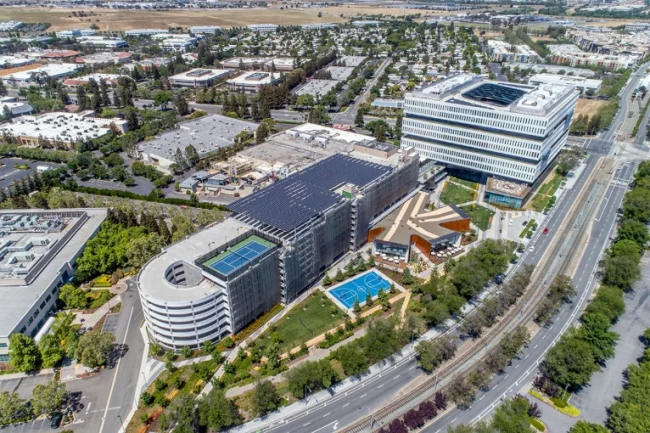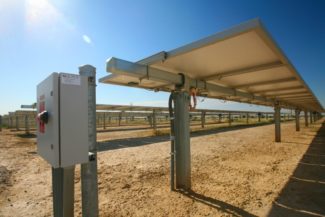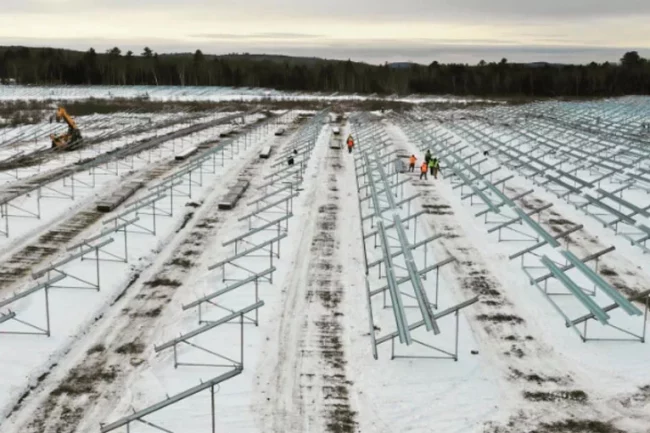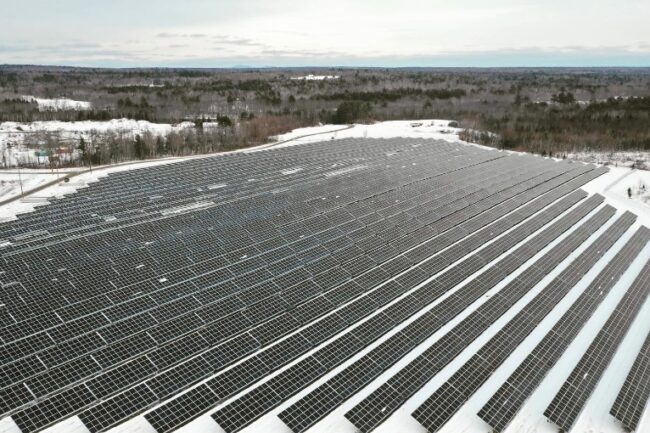When businesses in Ohio decide to go solar, they have the unique advantage of having a PV A-team to power the project. For example, consider the city of Brooklyn’s four-megawatt landfill project in Cuyahoga County. Located 20 miles south of Cleveland, this award-winning project is advancing the city toward its commitment to power itself with 100 percent renewable energy by 2050. With accolades from Solar Builder’s Project of the Year Award, the system leveraged RBI Solar’s landfill expertise in Ohio’s largest landfill solar plant.
Situation: Complex deal puts pressure on solar construction
The brownfield site was the perfect choice for Cuyahoga County sustainability leaders who wanted to ensure strong community support for the solar plant. Ohio already has relatively low-cost electricity, so it was important to make cost-efficient choices from the start. Installing a solar facility on a landfill meant the city wouldn’t have to lease expensive real estate for its clean solar generation. But there were many complex factors that came into play:
- The deal was a complicated, three-party agreement: The city of Brooklyn owns and leases the power to its local municipal utility — Cleveland Public Power — which then resells the electricity to the county.
- The purchase power agreement that was set up through a third-party investor was restricted by a rule that limits the county to 10-year agreements; that created lengthy delays to make the 20-year solar deal work.
- But the administration revisions to the tax code meant that the deal had to be finalized in six weeks to meet tax deadlines and allow the county to make a prepayment for the electricity at the time of commissioning.
Players: Regional partners team for success
Bringing together local PV companies on this project highlighted the state’s solar muscle. Not only did Ohio-based developer Enerlogics Solar employ 80 percent of the workforce from within the state, it also sourced the project’s racking and module products from within Ohio. Additionally, RBI Solar is headquartered in Cincinnati and manufactures all of its racking there, while First Solar boasts a 1.9-MW thin-film module production plant in Ohio.
Cuyahoga Landfill Solar Project – 4 MW
- 988 Ballasted GM2 racking system (1,976 posts) – RBI Solar
- 35,520 Series 4 thin-film modules – First Solar
- 2 central inverters – SMA America
- EPC by CS Energy
Synergy between the partners helped to power the project to its award-winning success. RBI Solar is one of First Solar’s ecosystem partners, trained to install its frameless thin-film modules. CS Energy and RBI have also teamed up on many projects — including multiple landfill systems across the country.
Challenges: Project contends with winter construction and landfill safety
By the time RBI Solar and its EPC partner CS Energy moved into construction, the teams had to contend with winter conditions and uber-tight schedules. As one of the leading racking companies to procure ballasted systems in the country, RBI brings to bear nearly 200 MWs of experience with landfill systems. Together with CS Energy, RBI navigated cost, schedule, and landfill safety flawlessly.
CS Energy is also known for its landfill solar experience with more than 130 MWs of similar projects under its belt. “We were impressed with the caliber of this Ohio-based solar team,” says CS Energy Kevin Magayah, Vice President of Business Development.
“Knowing that RBI Solar was designing and building the racking structure brought additional assurance that we would hit our construction targets safely,” he said. “Building solar on landfills is tricky business. Having RBI on our team gave us the confidence that we would have a reliable, cost-effective solution that would not disturb the landfill cap.”
Action: RBI brings its landfill expertise into play
RBI Solar put its skill and experience to the test. Its landfill experts worked on the system from the beginning, designing the ballasted structure, building the racks, sourcing the precast concrete foundations, and ensuring the complete mechanical installation during the wet winter months.
Because it is known for its transparency in the racking design process, RBI’s team presented the logistical considerations involved in choosing the right construction approach guiding the partners toward a more cost- and time-effective solution to limit the weight impact on the landfill membrane.
Solution: Ballasted systems weigh in pros and cons
RBI brings its solar chops and racking might to landfill systems. With deep experience building landfill systems that are protected over the 25-year life of the plant, RBI project managers seek efficiencies wherever possible. Analyzing the cost/benefit between precast and cast-in-place is key to meeting schedule and budget constraints.
- Safety FirstLandfills are highly controlled environments that require extra measures — precipitation can’t be allowed to seep through the waste and contaminate water supplies, odors and harmful toxins must not escape, and gas buildup must be carefully monitored.All of these risks require maintaining the integrity of the landfill cap, also known as the membrane. These protective systems have specific bearing capacities before they start to warp or tear; some thin out more rapidly than others. Minimizing the traffic and weight of vehicles during installation is key to ensuring safety.
With cast-in-place solar foundations, heavy concrete trucks must drive up and down every row to secure each foundation point. But precast concrete and pile foundations offer a far lighter solution because they can be rolled onto the site with smaller trucks that are easier to maneuver and have a reduced bearing capacity. They quickly are on and off the site, limiting membrane wear and tear.
- Cost, Schedule, and Quality Precast cement foundations are not always the most cost-effective options, primarily because of high transportation costs. A typical truck can deliver eight to 12 ballast blocks at a time, requiring multiple trips for a project the size of Brooklyn’s. Nonetheless, RBI strongly recommended precast foundations on this project because of how close the cement facility was — only five miles away — resulting in a two percent cost saving the city.Managing construction during Ohio’s wet winter was another reason to select a precast system. Because the blocks are cured indoors in a controlled environment, rain and moisture do not compromise the cement’s structural integrity and long-term reliability. Pre-cured blocks also save construction time on site; in Brooklyn’s case, the ballast blocks were precast with racking posts already attached. This made for quick installation when the rest of the system was delivered, shaving approximately four weeks off the construction schedule.
CS Energy goes into more detail on landfill development in Solar Power World.
Results: Solar win for all involved
The Cuyahoga landfill project will generate enough clean energy to save the county $3 million over 25 years, offsetting 7 to 8 percent of the load for 14 county buildings. A sustainable feat for all involved in the Buckeye State!
Leverage RBI’s ballasted system expertise on your next landfill project. Get in touch with our dynamic team to schedule a consultation.

